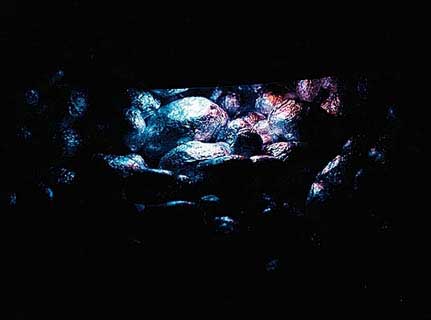
 |
|
 Fruits of Columbus is an object of light. It is a light object. It is surrounded by dark objects, that are no less active. It's just that their frequency is lower. The room is filled with radiating objects, and their typical positions and frequencies have a faintly familiar appearance. Entering the room is moving around in this mumbling and noisy group, trying to make sense of the stories that are told and to get hold of the atmosphere that's created, trying to find out what the excitement is all about, and why everybody is watching what seems to be a fire. Or is it a dinner cooking? Or is it just a TV monitor on top of a pile of some irregular shiny objects? At close look, the moving reality of what goes on in this room is created by very familiar things. The figures in the darkness are loudspeakers standing around. The grand view projected on the wall is the shine of a TV-set on potatoes wrapped in foil. In fact, there is a very obvious contrast between the theatrical effect Sabine Schäfer creates in her composition for this room and the plain visibility of the technology that makes it possible. When I was asked to think of a light-ambience for this particular room, it was clear to me that the emphasis would have to be on the musical aspects of the installation, and deciding how to best do this would be a matter of getting acquainted with the musical atmosphere, rather than trying to think of a clean and rational way of illustrating the process of three-dimensional sound. So the pile of potatoes and the monitor and the projection in the dark room are results of association and experimentation that were afterwards recognized as such and coloured with interpretation. So there is music moving in the darkness and there is a story unfolding to the attentive listener. There is a screen that feeds and a screen that tells. But as it happens, it is the illusion of transparancy of space and time that enables the visitor to go beyond the visible and audible.

|